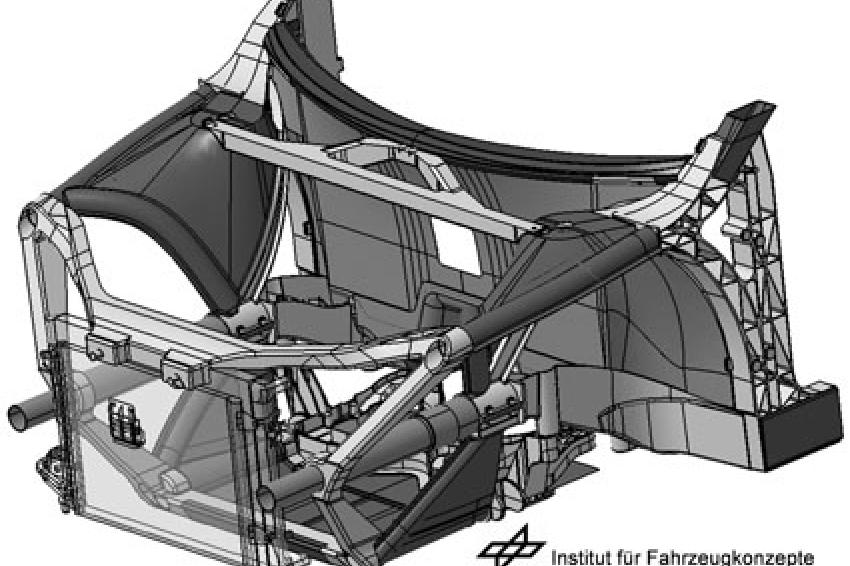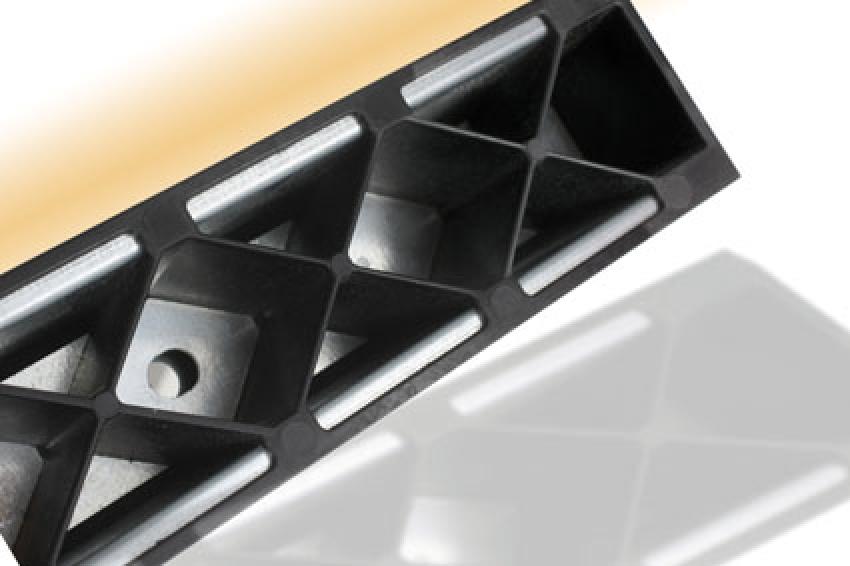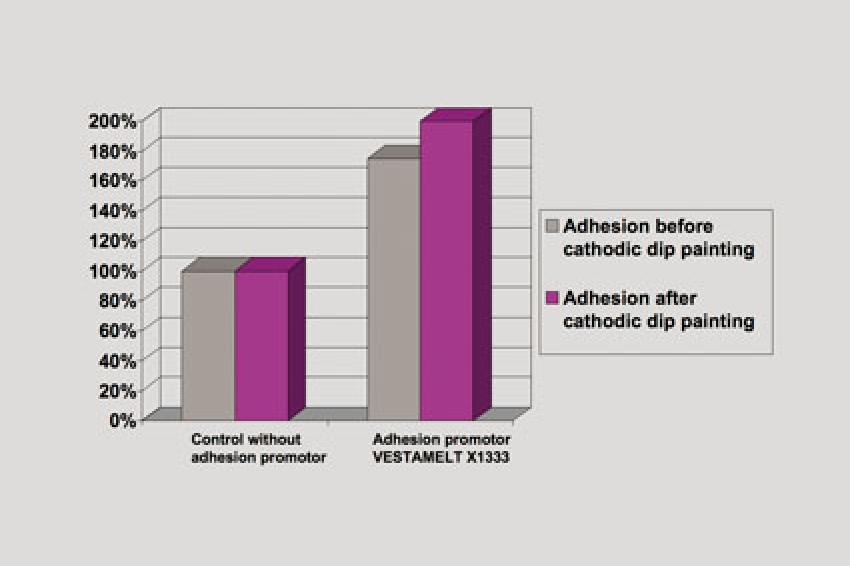Hybrid: Stronger and Lighter
Innovative Lightweight Construction with Adhesion Promoter
Making cars even lighter requires innovative solutions. Hybrid components with polymers are increasingly being installed to minimize the proportion of steel. If conventional mechanical anchors for the polymers are replaced with material bonds using a copolyamide adhesion promoter, the resulting components offer considerably improved mechanical properties and also reduce the amount of material required.
A distinct awareness for environmentally compatible action and statutory regulations for emission limits are prompting car makers to consider lightweight construction concepts that reduce the weight of the vehicles even further. Because of these constraints, the industry is increasingly turning to hybrid components in the structural area and in the area of add-on parts, replacing heavy steel with lightweight polymers. A common material combination is galvanized steel DX56D overmolded with PA6 GF30. However, the lack of adhesion between metal and polymer is a drawback. Hybrid components get their rigidity only through the mechanical anchoring of the polymer. New adhesion promoter systems, based on the copolyamide Vestamelt X1333 from Evonik, now allow material bonding between the different materials polymer and metal. The considerably improved mechanical properties allow new levels of freedom in the design and dimensioning of hybrid components. (Fig. 1).
Manufacturing the Hybrid Components
To ensure consistent quality of the components, the producer has to have a reproducible manufacturing process with low production tolerances. Different kinds of expertise must mesh to produce high-quality hybrid components. In particular, corrosion protection and visual aspects have to be considered.
Process Stages
The adhesion promoter as a functional component consists of a cryogenically ground copolyamide, which is especially formulated to adhere to metallic and polymer surfaces. The powder is applied directly to metallic strips or preformed metal inlays in an electrostatic spray coating process (ES) and also as a paint finish. The copolyamide is thermally crosslinkable.
The coil coating paint contains the polymer copolyamide adhesion pro-moter in dissolved form and is applied to metal strips in a roller application process. All steel and aluminum strips used in the automotive industry can be coated in this way. At the same time, the paint replaces the cathodic dip painting and thus provides corrosion protection. Apart from this, all the subsequent shaping and punch-ing processes in the automobile production process are carried out with no damage to the surface and no adverse effect on functions.
In a downstream drying furnace the paint is pre-crosslinked for the subsequent injection molding process. This pre-crosslinking prevents the functional paint from being washed out by the melt in the injection molding process.
The actual metal inlays are produced during shaping and punching. The main concern here is precise dimensional stability and reproducibility to prevent damage to the injection mold. The coated metal strips supplied from the coil coater are cut and shaped according to the specification of the system supplier (TIER1) or the OEM.
At the system supplier, the metal inlays are back-molded with the polymer molding compound, and the ribbed structure gives them the necessary stability. In this way, what was a rather weak metal part becomes a hybrid functional part that can withstand high mechanical stress. Metal inlays coated on one side can now still be subjected to CEC. The temperature in this process step ensures further crosslinking of the copolyamide adhesion promoter and thus further improves the component‘s mechanical properties (Fig. 2). The hybrid components can now be integrated directly into the OEM‘s production line in the body in white or can be further processed to form a complete module.
Savings
Using the adhesion promoter can save up to 20 % of the material, distributed between both materials. Apart from reducing the thickness of the steel sheet, the polymer ribbed structure can be optimized so that the required torsion and bending rigidities can be achieved with a considerable reduction in material. The load transfer points must be sufficiently known so that the stiffening polymer ribs can be dimensioned accordingly.
The combination of metal machining and injection molding allows highly complex geo-metries to be manufactured and integration of various functions in one component. This makes it possible for the first time to produce entire modules economically.
Mechanical Properties
Together with the company Neue Materialien Fürth, Erlangen carriers were produced with different molding compounds and were evaluated from a mechanical aspect. Tested were PA6-GF30, PA6-GF50, Vestamid HTplus M1033 (PPA-GF30), Vestamid HTplus M1035 (PPA-GF50), and PP-LGF30. OEMs are increasingly looking at polypropylene because of its price, although the mechanical parameters are low. PPA is used in areas that are sensitive to temperatures, since it offers advantages over PA6.
Erlangen carriers are made of 0.7mm thick DX56D Z100. The strips were coated in a coil coating process with 30 µm Vestamelt adhesion promoter and were formed. Advisable is a wet-chemical degreasing process before the coating. The researchers observed with finished components in a conditioned state (Fig. 3) significant improvement.
Outlook
The innovative approach of optimizing hybrid components by using a copolyamide adhesion promoter allows completely new design variations in which the required mechanical properties are retained and the necessary process reliability is ensured. In the best case scenario, one can largely do without mechanical anchor points in the component. In addition, the cost-intensive CEC step is unnecessary. Hence, the innovative developments in steel production and polymer processing solutions complement each other. OEMs are offered economic system solutions that take account of the lightweight trend and the related efforts to protect the environment.









